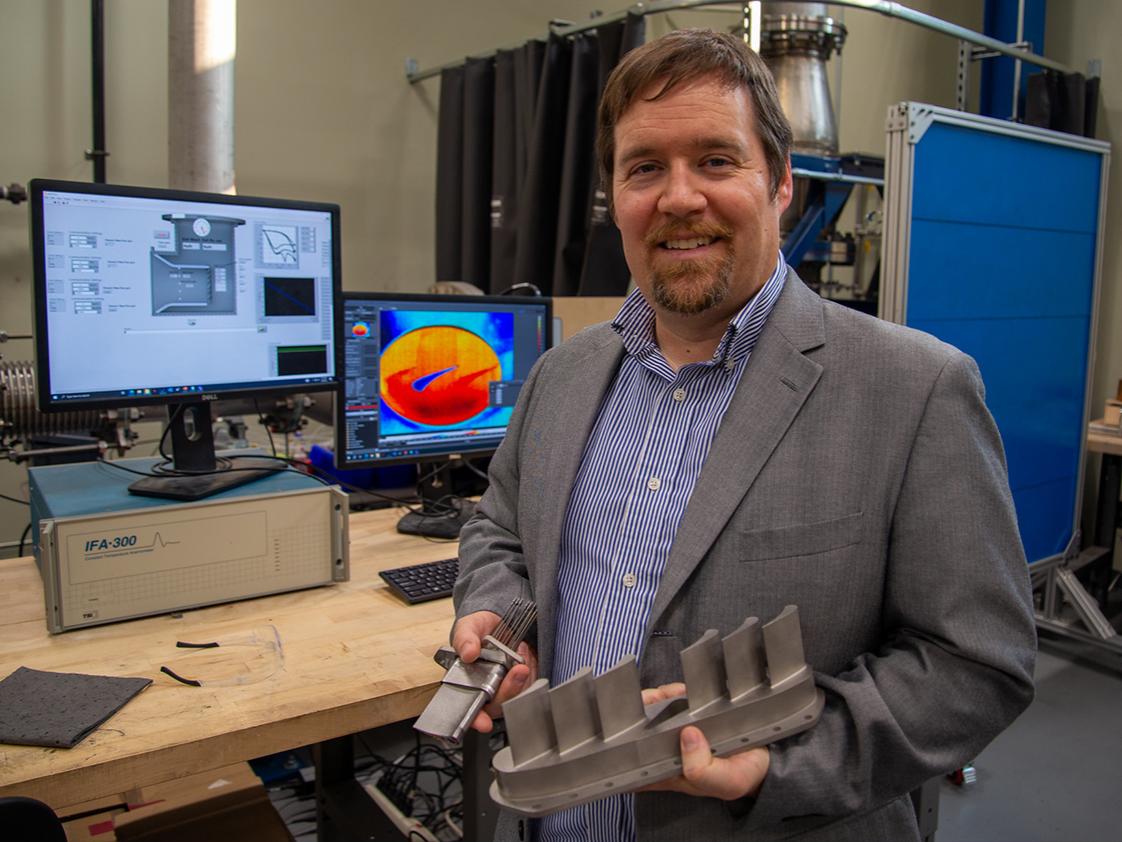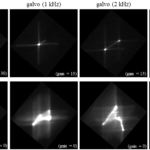2023-06-20 ペンシルベニア州立大学(PennState)
 Stephen Lynch, associate professor of mechanical engineering, holds metal 3D-printed turbine vanes that are tested in the high speed cascade shown in the background. Lynch was part of a team that 3D printed a turbine component with ceramics, which are more heat tolerant than traditional metals. Credit: Kate Myers/Penn State. All Rights Reserved.
Stephen Lynch, associate professor of mechanical engineering, holds metal 3D-printed turbine vanes that are tested in the high speed cascade shown in the background. Lynch was part of a team that 3D printed a turbine component with ceramics, which are more heat tolerant than traditional metals. Credit: Kate Myers/Penn State. All Rights Reserved.
◆この新しい部品は、従来の金属部品よりも高温に耐えることができ、航空機エンジンの燃料効率を向上させます。研究チームはその方法と結果を専門の会議で発表し、この技術をガスタービンエンジンの燃料効率向上に活用する可能性を探っています。
<関連情報>
- https://www.psu.edu/news/engineering/story/3d-printed-ceramics-may-increase-gas-turbine-fuel-efficiency-researchers-report/
- https://asme-turboexpo.secure-platform.com/a/solicitations/193/sessiongallery/12404/application/104059
積層セラミックタービンベーンの設計と冷却性能
Design and Cooling Performance of Additively Manufactured Ceramic Turbine Vanes
Andrew Fox,Stephen Lynch,Jason C. Young,Carl P. Frick,Jennifer Hankins,Kyle Kuhn,Stephan A. Brinckmann,Ray S. Fertig III
ASME 2023 Turbomachinery Technical Conference and Exposition June 26-30 in Boston
Ceramic materials are of significant interest in aviation and power generation applications that use gas turbines, due to their low density and ability to withstand high temperatures. Increased cycle thermal efficiency and higher specific power output is possible by incorporating ceramic components that enable high turbine inlet temperatures and lower required cooling airflow levels. However, ceramics can be difficult and costly to form into the complex shapes used in gas turbine components, often requiring specialized multi-step processes. Furthermore, ceramic components in the hottest areas of a gas turbine, such as vanes or blade shroud seals, will still likely require cooling which is challenging to implement in conventional ceramic manufacturing approaches. In this study, a polymer derived ceramic (PDC) additive manufacturing (AM) process was developed to print an aviation engine-scale gas turbine vane with complex internal cooling configurations. An FEA thermomechanical optimization model was developed to generate an internal cooling design that utilizes pin fins to augment internal heat transfer from the vane surface. This optimized design, along with a baseline internally cooled vane, was tested in a transonic linear cascade which allows for matched engine Mach and Reynolds conditions. Infrared thermography was used to evaluate blade surface temperatures to determine the overall cooling effectiveness for both the baseline ceramic vane and the optimized design. Overall cooling effectiveness for a baseline internally cooled ceramic airfoil is lower compared to metallic airfoils due to lower material thermal conductivity, which necessitates highly efficient internal cooling. Suction side cooling effectiveness values are lower than the pressure side due to large differences in local Mach number. Finally, the optimized internally cooled vane had significantly improved levels of overall cooling effectiveness relative to the baseline due to high surface area and internal convection coefficients.



